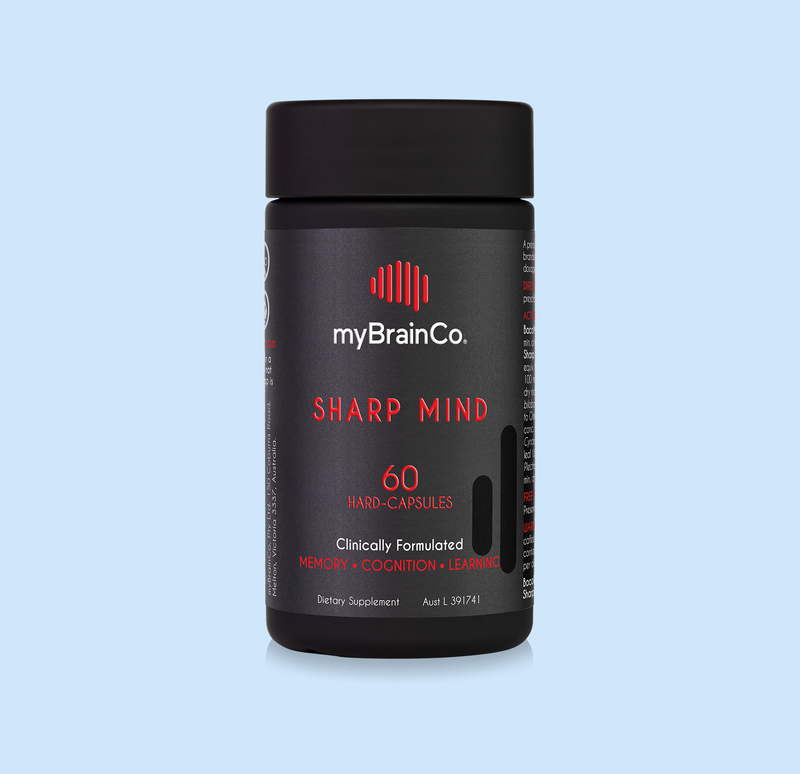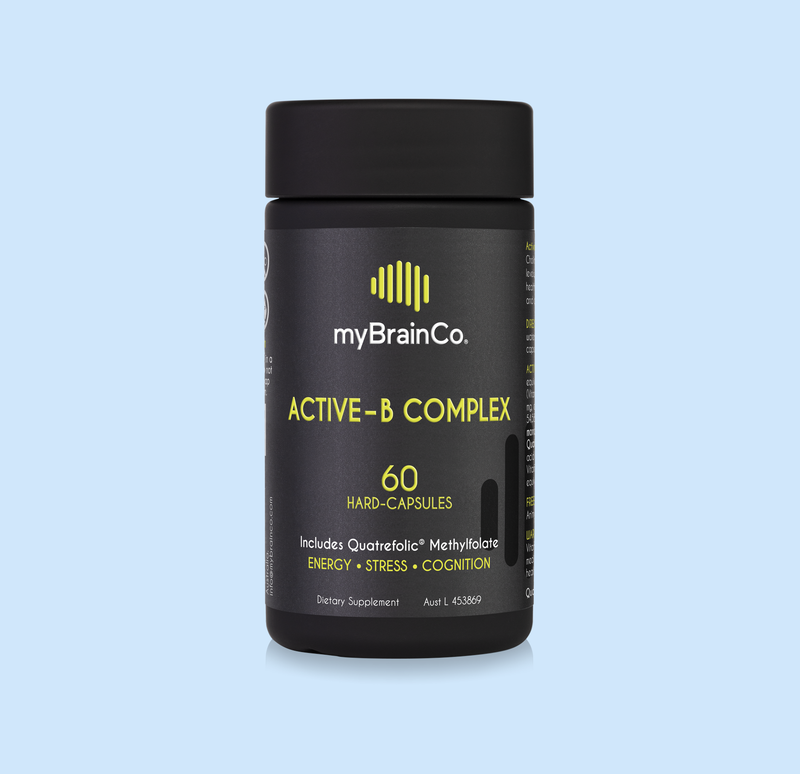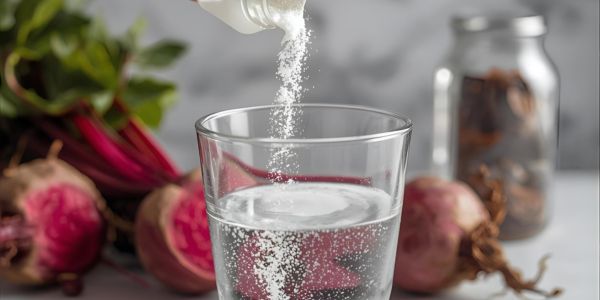TMG: The Rising Star of Methylation & Cellular Health
If you’ve noticed more health influencers, biohackers, and longevity experts talking about TMG lately, there’s a good reason. Trimethylglycine (TMG) (sometimes also referred to as betaine) is earning a reputation as a powerful, multifunctional nutrient that shows potential for supporting everything from cellular energy and mood to liver detoxification and even exercise performance.
TMG may just be one of the most underrated supplements available right now. Let’s break down what TMG is, how it works in the body, why it’s gaining popularity, and how it can be effectively combined with other nutrients to create personalised supplement stacks to meet specific health goals.
What is TMG?
TMG is a naturally occurring compound derived from the amino acid glycine with three methyl groups attached. It was first discovered in sugar beets (this is how it came by it’s alternative name, “betaine”), but it’s also found naturally in foods like spinach, quinoa, shellfish, and wheat bran.
In our body, because of its attached methyl groups, the core function of TMG is as a methyl donor. Meaning it contributes methyl groups (–CH₃) to support essential biochemical reactions. We’ve covered these methylation processes before, but in short, they are fundamental to:
-
DNA repair and gene expression
-
Detoxification pathways
-
Neurotransmitter production
-
Energy metabolism
It’s this potent methyl-donating property that accounts for why TMG is most commonly discussed in the context of healthy ageing, cognitive performance, and liver support.
Understanding How TMG Works in the Body
There’s a plethora of evidence that suggests that TMG’s most important role is built on its ability to support methylation. This life-critical biochemical process happens billions of times per second in the body, and methylation influences everything from hormone regulation to cardiovascular health.
Its next best-known application is as a targeted harmoniser for elevated homocysteine. Homocysteine is an amino acid that, when elevated, has been associated with cardiovascular and cognitive concerns.
In TMG’s action as a methyl donor, it helps to convert homocysteine into a much safer compound, methionine. This is highly desirable, as not only does it reduce the pool of homocysteine, but in addition, methionine can then be redeployed to produce other positive compounds, such as S-adenosylmethionine (SAMe), which is vital for optimising mood, liver function, and DNA methylation.
An overlooked action of TMG is its activity as an osmolyte, which means it is a compound that helps cells maintain fluid balance and integrity under stress. This may sound boring, but it is especially important for liver and kidney cells, as it supports cellular resilience and healthy detoxification. In addition, osmolytes are crucial to the function of our central nervous system because the brain and nerves must maintain a delicate balance of ions and water to facilitate the intracranial pressure and electrochemical gradients necessary for optimal neurotransmission.
Why TMG Is Growing in Popularity
TMG has quietly existed in the scientific and sports nutrition world for years, but its growing popularity is likely owing to its ease of use combined with its broad spectrum of applications:
-
Cardiovascular and Cognitive Health
Compelling evidence suggests that TMG is a valuable tool for maintaining homocysteine levels within a healthy range, thereby supporting overall heart and brain health.
-
Liver Function
TMG has been extensively explored for its protective and restorative effects on liver function. It serves liver wellbeing through a range of metabolic mechanisms, including supporting antioxidant status, enzymes, and mitochondrial function, as well as downregulating lipid accumulation associated with fatty liver conditions.
-
Energy & Performance
Some athletes use TMG to enhance power output and endurance. As an osmolyte, it helps maintain cellular hydration, which is important for protecting against heat shock and stress. Its qualities as a methyl donor also help to support energy metabolism pathways. Evidence has shown that incorporating TMG into a carbohydrate-electrolyte drink can enhance output performance, but that it also favourably supports post-exercise lactate, which may explain how it appears to aid recovery.
-
Longevity and Cellular Health
Because methylation influences gene expression, cellular repair capacity and detoxification, TMG is increasingly referred to as a “longevity nutrient” that helps maintain the smooth operation of cellular systems as we age.
-
Men’s Health, Performance & Hormone Profiles
TMG has been explored in a number of studies for its positive impact on strength, power, and endurance. However, more recently, researchers have also been investigating its potential to influence endocrine function, such as post-exercise cortisol and testosterone with favourable results. The publishing of these studies around 2021-2022 has certainly escalated TMG’s popularity as a performance supplement.
-
Mood, Motivation & Neurotransmitter Support
Through its role as a methyl donor, TMG supports the synthesis of neurotransmitters like dopamine, serotonin, and norepinephrine, and facilitates available SAMe. This has put TMG on the map for supporting emotional wellbeing, focus, and mental resilience.
Stacking TMG with Other Nutrients
TMG doesn’t act in isolation. In fact, its benefits can be enhanced when paired with synergistic nutrients:
-
B Vitamins (B6, B12, folate): These nutrients work in synergy in the same methylation pathways as TMG. Together, they support efficient homocysteine clearance, methylation, mood and energy.
-
Choline: Like TMG, choline can also act as a methyl donor. Together, they promote liver function and cognitive health.
-
Creatine: One of the body’s biggest methylation demands is creatine synthesis. Supplementing with both can reduce the metabolic strain on methylation pathways while supporting strength and energy production.
-
Antioxidants: Because methylation and detoxification are linked to oxidative stress, combining TMG with antioxidant nutrients may further support cellular resilience.
- Electrolytes: The osmolyte activity of TMG can help to promote cellular hydration status and cellular resistance to stress.
- NMN: TMG is often deployed alongside NMN supplementation to support the methyl demands required to activate energy pathways. Adding TMG can be the missing piece if NMN isn't delivering the expected boost.
This “stacking” approach is why TMG is often included in advanced nootropic, liver support, and longevity formulas.
Practical Applications & Dosing
Compliance with TMG is easy. It’s a tasteless powder that can be added to any liquid beverage, or thrown into your daily water bottle. Most clinical studies use doses in the range of 500 mg to 3 grams per day, depending on the application.
-
For methylation and cardiovascular support, 500–1000 mg daily is common.
-
For athletic performance, higher doses (up to 2.5 g/day) have been used in trials.
-
For liver health, TMG is often part of broader protocols with other nutrients.
As with any supplement, it’s wise to start low, assess tolerance, and consult with a qualified health professional, who can help you track the impact TMG might be having on things like homocysteine. Always speak to your health professional if you have existing health conditions or are on medications, before implementing a new supplement to your regimen.
Should You Try TMG?
There are a lot of trending supplements, but TMG has a lot of scope for use owing to its broad benefits to many essential biological processes. By supporting methylation, liver function, energy metabolism, hormone balance, mood regulation, and cellular resilience, TMG is emerging as a significant player in wellness and longevity strategies.
References
Steenge GR, et al. Betaine supplementation lowers plasma homocysteine in healthy men and women. The Journal of Nutrition 2003;133(5):1291–1295.
Lever M, etal. (2012). Betaine and secondary events in an acute coronary syndrome cohort. PLoS One 2012;7(5):e37883.
McRae MP. Betaine supplementation decreases plasma homocysteine in healthy adult participants: a meta-analysis. J Chiropr Med. 2013 Mar;12(1):20-5.
Craig SA: Betaine in human nutrition. Am J Clin Nutr. 2004 Sep;80(3):539-49
Arumugam MK, et al. Beneficial Effects of Betaine: A Comprehensive Review. Biology (Basel). 2021 May 22;10(6):456.
Arazi H, et al. Effects of short-term betaine supplementation on muscle endurance and indices of endocrine function following acute high-intensity resistance exercise in young athletes. J Int Soc Sports Nutr. 2022 Mar 22;19(1):1-16.
Nobari H, et al. The effects of 14-week betaine supplementation on endocrine markers, body composition and anthropometrics in professional youth soccer players: a double blind, randomized, placebo-controlled trial. J Int Soc Sports Nutr 2021;18:20.Trepanowski JF, et al. The effects of chronic betaine supplementation on exercise performance, skeletal muscle oxygen saturation and associated biochemical parameters in resistance trained men. J Strength Cond Res. 2011 Dec;25(12):3461-71.



